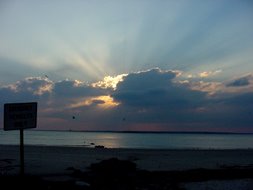"Plantation Smoke House" A Plein Air Painting of a Historic Outbuilding at Hobcaw Barony
"Plantation Smokehouse" is my plein air painting of a historic outbuilding at Hobcaw Barony, a Historic National Site and research reserve of the Bell W. Baruch Foundation.
In the painting, shadows play on the white side of the smoke house, as Spanish moss sways in the breeze from nearby Winyah Bay.
I used color contrasts and value changes to direct the viewer's eye from the moss filled tree at left, across the smokehouse and off through the shadows to the water in the distance.
"Plantation Smoke House"
Oil on panel
Size: 11" x 14"
Price on request Hobcaw Barony is composed of land that was granted in 1718 as a "barony" to English royalty. It was later sold and subdivided into plantations extending from the Waccamaw River to the Atlantic Ocean. The word "Hobcaw" is a Native American term meaning "between the waters".
Hobcaw Barony is composed of land that was granted in 1718 as a "barony" to English royalty. It was later sold and subdivided into plantations extending from the Waccamaw River to the Atlantic Ocean. The word "Hobcaw" is a Native American term meaning "between the waters".
The antebellum smokehouse at Hobcaw  was used to cure game caught by the hunting parties to the Barony when it was used as a winter hunting retreat by Bernard Baruch in the early 1900's . Duck, turkey, deer, quail, foxes, and wild boar were hunted by distinguished guests, including President Franklin D. Roosevelt and British Prime Minister Winston Churchill .
was used to cure game caught by the hunting parties to the Barony when it was used as a winter hunting retreat by Bernard Baruch in the early 1900's . Duck, turkey, deer, quail, foxes, and wild boar were hunted by distinguished guests, including President Franklin D. Roosevelt and British Prime Minister Winston Churchill .




 Their family story is an important part of a new project at
Their family story is an important part of a new project at Mr. Leach (on the left) shows his son and grandson the addition to the old family cabin he built by himself over 50 years ago. He rigged a special rope pulling system to lift the metal sheets onto the roof by himself. Isaac Leach remembers a large wooden barrel that was used to white wash the cabin many years ago when he was a boy. All three men lived in the cabin, although Jackson was only 2 when he moved with his family to a new home.
Mr. Leach (on the left) shows his son and grandson the addition to the old family cabin he built by himself over 50 years ago. He rigged a special rope pulling system to lift the metal sheets onto the roof by himself. Isaac Leach remembers a large wooden barrel that was used to white wash the cabin many years ago when he was a boy. All three men lived in the cabin, although Jackson was only 2 when he moved with his family to a new home. New staff members meet with the Leach's at "the Street". Historical interpreter Preston Cooley and Managing Site Historian D.J. Tucker discuss plans for the historical sites opening in February with Jackson, Johnny, and Isaac Leach.
New staff members meet with the Leach's at "the Street". Historical interpreter Preston Cooley and Managing Site Historian D.J. Tucker discuss plans for the historical sites opening in February with Jackson, Johnny, and Isaac Leach.



 Here are photos of my mortar and pestle and spinning wheel (circa 1800) in the cabin. Both are similar to those which would have been used on the plantation in the Colonial Era.
Here are photos of my mortar and pestle and spinning wheel (circa 1800) in the cabin. Both are similar to those which would have been used on the plantation in the Colonial Era.
 Here is
Here is 